Day :
- Track 1: Skin Cancer Track 4: Surgical Dermatology Track 7: Clinical Immunology
Session Introduction
Ajit K Verma
University of Wisconsin, USA
Title: Topically applied Hsp90 inhibitor 17AAG inhibits ultraviolet radiation induced cutaneous wrinkles and squamous cell carcinomas
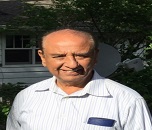
Biography:
Ajit K Verma has obtained his PhD in 1972 at the Flinders University of South Australia, Adelaide, Australia and Postdoctoral training in 1976 at the McArdle Laboratory, University of Wisconsin, USA. Currently, he is a full Professor in the Department of Human Oncology, University of Wisconsin, USA. His major findings include generation of PKCε transgenic and conditional PKCε knockout mice, identification of PKCε downstream molecular targets (Hsp90, Stat3, cytokines) and their role in ultraviolet radiation carcinogenesis. He was the first to report that Hsp90 inhibitor 17AAG can be topically applied to prevent development of SCC.
Abstract:
We present here that Heat shock protein 90ï¢ (Hsp90ï¢) interacts with protein kinase Cï¥ (PKCï¥); a predictive biomarker of various human cancers including ultraviolet radiation (UVR) induced cutaneous squamous cell carcinoma (SCC). Hsp90 inhibitor 17-(allylamino)-17-demethoxygeldanamycin (17AAG), when topically applied to mouse skin, inhibits ultraviolet radiation (UVR) induced Hsp90ï¢-PKCï¥ interaction, wrinkle formation and development of SCC. In these experiments, DMSO:Acetone (1:40 v/v) solution of 17AAG (500 nmol) was applied topically to mouse skin in conjunction with each UVR exposure (1.8 kJ/m2). The UVR source was Kodacel-filtered FS-40 sun lamps (approximately 60% UVB and 40% UVA). In independent experiments with three separate mouse lines (wild-type FVB, PKCï¥ over expressing transgenic FVB and SKH-1 hairless mice), 17AAG treatment increased the latency and decreased both the incidence and multiplicity of UVR induced SCC. Topical 17AAG did not elicit any toxic effects. 17AAG caused inhibition of SCC induction accompanied decrease in UVR-induced: Hyperplasia, wrinkle formation and Hsp90ï¢-PKCε interaction, Hsp90ï¢, PKCε, Stat3, pStat3Ser727, pStat3Tyr705, Akt, pAktser473 and matrix metalloproteinase (MMPs) expression levels. The results presented here indicate that topical Hsp90 inhibitor 17AAG is nontoxic and is effective in prevention of epidermal hyperplasia, wrinkle formation and SCC.
Hubert Daisley
University of the West Indies, Trinidad and Tobago
Title: HTLV_1 Lymphomas, the skin and its Histiogenisis
Biography:
Hubert Daisley is a Professor and Chairman of Anatomical Pathology at the University of the West Indies, St Augustine, Trinidad, W.I. He is also Associate Tutor and Course director of Forensic and Legal Medicine at The Hugh Wooding Law School at St Augustine Trinidad, and Consultant Pathologist at San Fernando General Hospital, and Scarborough Hospital. His Research interests are: General Pathology and also Forensic Medicine and Pathology.
Abstract:
HTLV-1 lymphomas are endemic in the Caribbean. Generalized lymphadenopathy, hepatosplenomegaly, maculopapular rash and hypercalcemia are some of the distinguishing clinical features. Much attention was given to the development of the lymphoma within lymph nodes with secondary involvement of the skin. It has become apparent that the histiogenesis of ATL lymphoma may originate within the skin (Primary ATL of the Skin) with a protracted indolent course, which eventually involves lymph nodes and other organs. Three cases of primary ATL of the skin are presented in support of this theory.
Svetlana Gradova
Belarusian Medical Academy of Post Graduate Education, Belarus
Title: A case of infiltrative basal cell carcinoma sustaining the necessity of the thorough clinicopathological correlation
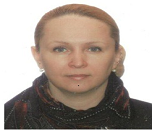
Biography:
Svetlana Gradova was graduated from Belarusian State Medical University in 2003 (General Medicine). In 2007, she was graduated from Belarusian Medical Academy of Postgraduate Education (Dermatovenereology). She was employed with City Clinical Skin and Venereal Diseases Clinic (Minsk, Belarus) as a Dermatologist for a several years. From 2007 she has been taking a full-time course in the Clinical Residency at the Department of Dermatology, Belarusian Medical Academy of Postgraduate Education. She has published 8 papers in reputed local and European journals.
Abstract:
Each specialist, even the most experienced one, at some point of their career faces the situation when the diagnosis is very uncertain and sometimes we are forced to acknowledge a mistake and assume the unpleasant consequences of misdiagnosing. What can be done to diminish the frequency of diagnostic mistakes? Today’s medical technologies can provide us with amazing opportunities of using such modern and very promising non invasive imaging techniques as dermoscopy, sonography, confocal microscopy, multiphoton and optical coherence tomographies. There is no doubt they could be very helpful in the process of defining the diagnosis, especially when used in combination, but all of them have their own list of limitations concerning their opportunities, potential practical applicability and accessibility. Considering this, I would like to remind everyone about the accessible, relatively cheap and extremely useful diagnostic method which should be used routinely in order to enhance diagnostic accuracy. I am going to talk about the importance of histological study and the necessity of clinicopathological correlation. Unfortunately, a case I am going to report is just the one among the countless similar cases, when the right decision of performing early pathomorphological study was not made, resulting in definite unpleasant consequences which I am going to discuss in my speech.
Eyal Levit
Advanced Dermatology Laser and Cosmetic Surgery, USA
Title: Treatment of basal cell skin cancer in 2016: Tips and techniques

Biography:
Eyal Levit has completed his MD at the Albert Einstein College of Medicine in 1995. He has completed his Dermatology Residency at Columbia Presbyterian Medical Center. Following his Residency he has completed a one year MOHS Micrographic, Laser and Dermatologic Surgery Fellowship at the University of Pennsylvania, USA. He had an additional 2 years of Fellowship training in Cosmetic and Laser Surgery at Columbia University. Until recently he was the Director of Cosmetic and Dermatologic Surgery at St. Luke’s Hospital Columbia University, a post he held for 14 years. He currently runs an Advanced Dermatology Laser and Cosmetic Surgery, a thriving dermatology practice in New York City. He has published over 20 papers and is a recipient of multiple awards.
Abstract:
Recent advances in the treatment of Basal Cell Skin Cancer (BCC) have targeted the PATCH gene mutation found in up to 80% of BCCs. The reported cure rate of these biological therapies is about 40%. The difficulty of these treatments is preventing the recurrence of the tumor once the biological therapy is discontinued. Current and new treatment options for skin cancer with their potential risks and benefits will be presented as well as a novel treatment modality utilizing the combination therapies of Imiquimod cream and Vismodegib to improve the cure rate to about 90%. A successfully cured case of a large BCC using Vismodigib and Imiquimod will be reviewed suggesting a promising path for non-surgical solution of BCC in selected cases.
Changgui Lan
China National Nuclear Corporation 416 Hospital, China
Title: Morphological diversity of pretibial myxedema and its evolving process: A retrospective study of 216 cases
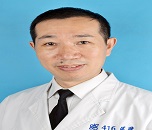
Biography:
Changgui Lan has completed his MD from Luzhou Medical College and MSc from West China Hospital of Sichuan University and Postdoctoral studies from Columbia University Medical Center and New York University, School of Medicine. He is the Director of Department of Dermatology at China National Nuclear Corporation 416 Hospital and the 2nd Affiliated Hospital of Chengdu Medical College, Sichuan Province, China. He has published more than 30 papers in English journals and Chinese journals. He has specialized in research of pretibial myxedema from epidemiology, clinical manifestation and diagnosis to treatment. He has published 5 papers about pretibial myxedema and his PTM patient numbers are the biggest in the world.
Abstract:
Pretibial myxedema (PTM) was characterized by excessive deposit of hyaluronan and hyperplasia of local skin and always associated with a group of autoimmune thyroid diseases. Its pathogenesis and outcome were unclear. 216 cases with PTM were retrospectively reviewed to disclose its morphologic features and mechanism of evolving process and outcome. Primary lesions at onset were nodules, swelling erythema and papules that evolved into nodule, plaque, diffuse swelling, tumor, mixture and elephantiasis. Different levels of serum TRAb caused different variants. The highest was in elephantiasis and the lowest in nodule. Sub-variants were caused by local injury. In the evolving process existed 4 stages including active, stable, sclerotic and receding stages. Serum TRAb level at active stage was statistically higher than stable, sclerotic and receding stages, as were the cases in the perivascular infiltration of CD8+ and CD4+ lymphocytes. The TRAb level at remission after steroid was lower than that before therapy but the level increased when PTM relapsed. The fluctuation of autoimmunity was the cause of lesional activation and stability or relapse and remission. Predicted outcome of 6 variants by drawing curves of serum TRAb levels in the 16-year course corresponded with clinical outcome that nodular variant subsided spontaneously with the steady decline of TRAb level on the basis of lower level but other 5 variants worsened intermittently with repeats of active and stable stages in the fluctuation of autoimmune activity on higher level, cases at sclerotic stage persisting with stable TRAb level. PTM needed early treatment to avoid severe variants.
Maria Paulina Estrada
Universidad CES, Colombia
Title: The use of photodynamic therapy and Accutane to treat granuloma faciale in a dark skin person: A case report
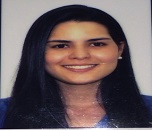
Biography:
Maria Paulina Estrada is currently pursuing her Medical degree from CES University. She is a Member of Scientific Association of Medical Students University CES. She has published one Surgical Pearl in Journal of the American Academy of Dermatology (JAAD) and Foreign Guest Presenter on CME Grand rounds at New York Presbyterian Hospital.
Abstract:
A case report of using the combination of Levulan, Blue light and Accutane pretreatment with Accutane for the treatment of this very recalcitrant disease will be discussed along with the presumed mechanism of action and the changes with each phase of treatment used in the patient. Photodynamic acne therapy is the quickest and most effective way to control acne and clear the skin. It does not require dangerous oral medication or long term dosing of antibiotics that requires strict compliance and can create antibiotic resistance and other complications. PDT controls resistant, hard to treat active acne by combining light and a special light activated solution that targets and destroys acne activity. PDT also diminishes older acne scars leaving your skin smoother. The risk, benefits and alternatives of this treatment modality will be evaluated and a comparison with the treatments used currently. A chronological sequence of pictures show the changes obtained during the treatment time will be presented.
- Track 3: Acute Dermatological Diseases Track: 10 Fungal Skin Infections
Session Introduction
Eleonora Dubljanin
University of Belgrade, Serbia
Title: Application of a T. rubrum specific PCR and pan-dermatophyte PCR in the diagnosis of suspected onychomycosis in Serbian patients

Biography:
Eleonora Dubljanin has completed her Magister degree and currently is awaiting the public defense of Doctoral thesis at the Faculty of Medicine University of Belgrade, Belgrade, Serbia. She is working as an Assistant Professor at the Institute of Microbiology and Immunology, Faculty of Medicine University of Belgrade where is mainly involved in research and teaching in the field of fungal and parasitic human infections. She has published more than 10 papers in international scientific journals.
Abstract:
Background: The diagnosis of onychomycosis is still in most countries based on the demonstration of fungal elements in nail specimens by microscopy, culture and identification of the causative species. This is time-consuming, requires trained personnel and has sub-optimal sensitivity. Objectives: The aim of this study was to compare a conventional PCR based approach with traditional diagnostic methods using clinical nail specimens from patients with suspected onychomycosis from Serbia. Methods: One sample was collected from each of 183 patients with suspected onychomycosis from Serbia. All samples were subjected to direct microscopy (potassium hydroxide-KOH and Blankophor-BP), PCR and culture. Overall, three separately run PCR assays were employed: A specific PCR targeting T. rubrum and a pan-dermatophyte PCR followed by a T. interdigitale specific PCR for pan-dermatophyte positive but T. rubrum negative samples. Results: Direct microscopy, culture and PCR were positive in 84/183 (45.9%), 48/183 (26.2%) and 98/183 (53.5%) specimens, respectively. Dermatophytes were cultured in 47/183 (25.7%) with predominance of T. rubrum 44/48 (91.7%). Of 98 PCR positive samples, T. rubrum was detected in 83/98 (84.7%), T. interdigitale in 5/98 (5.1%), while the remaining 10 (10.2 %) were dermatophyte positive but not identified to species level. Conclusions: PCR has high sensitivity in nail specimens and offers rapid and accurate species identification which can reduce the number of consultations needed and empirical usage of antimycotics. This study demonstrated the applicability of the pan-dermatophyte and T. rubrum specific PCR in Serbia as being a rapid and reliable diagnostic tool for onychomycosis.
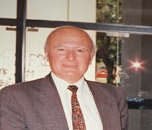
Biography:
Hugo Arturo Cejas is a Doctor of Medicine and Surgery. He has worked as DePatologia Professor from 1990-2007, National University of Cordoba, Argentina, Faculty of Medicine Director of the Graduate School of the Faculty of Medicine from 2005-2006 and Director of the Journal of the Medical Faculty from 1999-2002.
Abstract:
Two techniques are presented with ammoniacal silver carbonate Del Rio Hortega, for identification of fungi, Basilus Hansen and amastigotes of Trypanosoma cruzi, etiologic agent of Chagas disease. Chagas disease, known as American trypanosomiasis is a tropical parasitic disease caused by the protozoan Trypanosoma cruzi. It spreads mostly by insects known as Triatominae or kissing bugs. T. cruzi spread to humans and other mammals by blood-sucking "kissing bugs" of the sub family Triatominae. In addition to the results circumstances evaluate clinical and pathological anatomic mycosis, predominantly in this part of the world, with skin lesions such as chromoblastomycosis, mycetomas, South American blastomycosis, coccidioidomycosis, histoplasmosis, sporotrichosis, mucormycosis, aspergillosis, criptococosis, injuries and Fusarium Chagas disease. It is noted that diseases with immunodeficiency, modify the evolution of these diseases with serious injuries such as cerebral systemic candidiasis.
Anu T Singh
Dabur Research Foundation, India
Title: Development of a novel polyherbal topical formulation for the management of eczema

Biography:
Anu T Singh has completed her PhD in Tumor Biology from All India Institute of Medical Science, Delhi and Postdoctoral research from National Institute of Immunology, Delhi. She is the Vice President of Dabur Research Foundation (DRF). She has published and presented more than 40 research papers in peer-reviewed journals & scientific meetings.
Abstract:
Eczema is an inflammatory, chronically relapsing, non-contagious and a pruritic disease with itchy, red, swollen and cracked skin. Current management strategies include oral medications, steroid creams and light therapy. We have developed a novel aqueous mixture (SIRB-001) consisting of 3 Traditional Chinese Medicine (TCM) based herbs; Rheum palmatum L. (Da Huang), Rehmannia glutinosa Libosch (Sheng di huang) and Lonicera Japonica (Jin yin hua) in the ratio 1:1:3. SIRB-001 has previously demonstrated promising anti-psoriatic activity in pre-clinical and clinical studies. SIRB-001 was further tested for efficacy in eczema using pre-clinical models, followed by clinical trial. SIRB-001 has demonstrated significant inhibitory effects on secretion of TNF-α, TARC and VEGF in keratinocytes (HaCaT). Considerable down-regulation of IL-6 in RAW264.7 cells and IgE in human myeloma cell line-U-266 was observed. SIRB-001 also exhibited inhibition of JAK-1/JAK-3. SIRB-001 based cream was developed and was found to be highly safe in animal studies. Encouraging preclinical results paved the path for clinical investigation in 30 subjects with eczematous lesions. The efficacy, safety and tolerance of SIRB-001 cream was evaluated in a mono-centric, open label study with treatment regimen of twice daily application for 4 weeks. At weekly intervals, Eczema Severity Index (ESI) and Investigator's Global Assessment Severity (IGAS) was determined in subjects. SIRB-001 cream demonstrated significant (p<0.001) decrease in ESI, IGAS (d28-d0) and was well tolerated in human patients with a good safety profile. Hence, it can be concluded that SIRB-001 is a highly effective new treatment with a favorable safety profile for management of eczema.
- Cosmetic Dermatology
Session Introduction
Evgeniya Ranneva
Skin Tech Pharma Group, Spain
Title: New medical approach for rejuvenation of the periorbital area

Biography:
Evgeniya Ranneva is presently working as a Dermatologist and Specialist in Rehabilitative and Reconstructive Medicine. She has completed her PhD in Aesthetic Medicine in 2003. She is an experienced Trainer of chemical peelings, International Trainer of fillers and botulinum toxin injection. She is the Founder of first public training course “New method: Mesotherapy”, “Homeomesotherapy in aesthetic medicine” (Russia). She is the Scientific Coordinator of educational project for “International Plastic-Aesthetic Residence” (Spain, Belgium and Italy). She is working as a Medical Advisor for Aesthetic Dermal SL and Project Head for “RRS-Inject” (Spain). Her main research focuses on dermatology, cosmetic dermatology and aesthetic medicine.
Abstract:
Medical device CE class III is a new potential synergistic treatment for circles under the eyes and lymphedema. It is injection into the tear trough area, palpebral malar groove and upper eyelid. The main medical proposal for this new therapeutic approach is to minimize side effects during long-term therapy and be effective and save. The most common treatment option in the periorbital area is with cross linked Hyaluronic Acid (HA) and therefore, it is important to be aware of the usual complications such as swelling by overcorrection, nodules and edema by compression of lymphatic system. Every ampoule of 1.5 mL contains 5.0 mg/mL of non cross linked HA associated with active biorevitalization solution (BS 27.3 mg/mL) and helps improving the transport function of the actives from biorevitalization solution. The complex actives of BS are: Antioxidants, flavonoids, saponins, polyphenols, peptides and trace element. The results of the study indicate that injections of this product applied on the tear trough, the palpebral malar groove and also the upper eyelid area is a safe and effective treatment with minimum side effects. Medical device CE class III does not cause edema has no overcorrection issues and neither Tyndall effect. The best efficacy was observed in case of volume loss on the area of tear trough and palpebromalar groove combined with lymphedema. Although the results of treatment are very satisfactory, they require further investigation.
Eyal Levit
Advanced Dermatology Laser and Cosmetic Surgery, USA
Title: Lower lid blepharoplasty: How to make it safer and easier

Biography:
Eyal Levit has completed his MD at the Albert Einstein College of Medicine in 1995. He has completed his Dermatology Residency at Columbia Presbyterian Medical Center. Following his Residency he has completed a one year MOHS Micrographic, Laser and Dermatologic Surgery Fellowship at the University of Pennsylvania, USA. He had an additional 2 years of Fellowship training in Cosmetic and Laser Surgery at Columbia University. Until recently he was the Director of Cosmetic and Dermatologic Surgery at St. Luke’s Hospital Columbia University, a post he held for 14 years. He currently runs an Advanced Dermatology Laser and Cosmetic Surgery, a thriving dermatology practice in New York City. He has published over 20 papers and is a recipient of multiple awards.
Abstract:
Eyelid surgery or blepharoplasty, improves the appearance of the upper eyelids, lower eyelids or both. Whether you want to improve your appearance or are experiencing functional problems with your eyelids, eyelid surgery can rejuvenate the area surrounding your eyes. Specifically, eyelid surgery can treat: Loose or sagging skin that creates folds or disturbs the natural contour of the upper eyelid, sometimes impairing vision; Excess fatty deposits that appear as puffiness in the eyelids; Bags under the eyes; Drooping lower eyelids that reveal white below the iris; and excess skin and fine wrinkles of the lower eyelid. A simple and novel method for lower lid blepharoplasty under local anesthesia recently published in the Journal of the American Academy of Dermatology is reviewed and its benefits over traditional transconjunctival and transcutaneous blepharoplasties are discussed in detail. A broad and thorough understanding and basic skills will be outlined to the surgeon interested in lower lid blepharoplasty which would enable him to offer this safe and simple procedure for his patients.
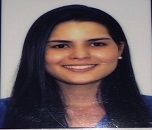
Biography:
Maria Paulina Estrada is currently pursuing her Medical degree from CES University. She is a Member of Scientific Association of Medical Students University CES. She has published one Surgical Pearl in Journal of the American Academy of Dermatology (JAAD) and Foreign Guest Presenter on CME Grand rounds at New York Presbyterian Hospital.
Abstract:
Dermal fillers help to diminish facial lines and restore volume and fullness in the face. As we age, our faces naturally lose subcutaneous fat. The facial muscles are then working closer to the skin surface, so smile lines and crow’s feet become more apparent. Dermal fillers can be very helpful in those with early signs of aging or as a value added part of facial rejuvenation surgery. Dermal fillers can be used to plump thin lips, enhance shallow contours, soften facial creases and wrinkles and improve the appearance of recessed scars. The safe technique of fillers used in the earlobe with Voluma and the sculpting of the nose will be discussed showing before and after photos. The discussions, before and after photos will help the participant offer a wider variety of solutions to their patients who may otherwise be contemplating earlobe surgery or rhinoplasty.
Evgeniya Ranneva
Skin Tech Pharma Group, Spain
Title: Medical device CE class III increases transcription of collagen type 1 and elastin genes in human skin fibroblast in vitro

Biography:
Evgeniya Ranneva is presently working as a Dermatologist and Specialist in Rehabilitative and Reconstructive Medicine. She has completed her PhD in Aesthetic Medicine in 2003. She is an experienced Trainer of chemical peelings, International Trainer of fillers and botulinum toxin injection. She is the Founder of first public training course “New method: Mesotherapy”, “Homeomesotherapy in aesthetic medicine” (Russia). She is the Scientific Coordinator of educational project for “International Plastic-Aesthetic Residence” (Spain, Belgium and Italy). She is working as a Medical Advisor for Aesthetic Dermal SL and Project Head for “RRS-Inject” (Spain). Her main research focuses on dermatology, cosmetic dermatology and aesthetic medicine.
Abstract:
Mesotherapy/biorevitalization with hyaluronic acid (HA) is a treatment approach currently used for skin rejuvenation. Various products are available on the market and present a wide range of polycomponent formulations. Most of those formulations contain non cross linked hyaluronic acid in combination with a biorevitalization cocktail, formed by various amounts of vitamins, minerals, amino acids, nucleotides, coenzymes and antioxidants. Although ingredients are very similar in-between the different products, in vitro and clinical effects may vary substantially. There is a real need for better characterization of those products in terms of their action on human skin or in vitro skin model. In this study, we analyzed the effect of Medical device Class III based in HA on human skin fibroblast in vitro. Skin fibroblast viability and capacity to induce the production of key extracellular matrix was evaluated in presence of different concentration of RRS HA injectable. Viability was evaluated through MTT assay and key extracellular matrix genes collagen type 1 and elastin were quantified by quantitative PCR. Results demonstrated that the product could promote human skin fibroblast viability (+15%) and increased fibroblast gene expression of collagen type 1 gene a 9.7 fold and elastin a 14 fold time in vitro. Those results demonstrate that mesotherapy/biorevitalization products can effectively modulate human skin fibroblast at least in vitro.
